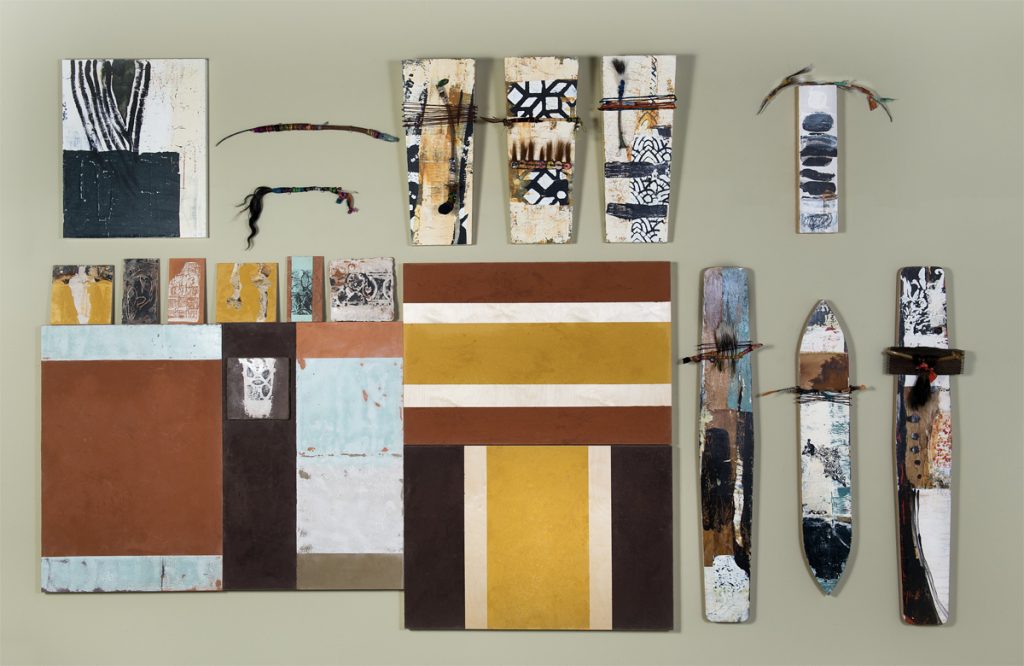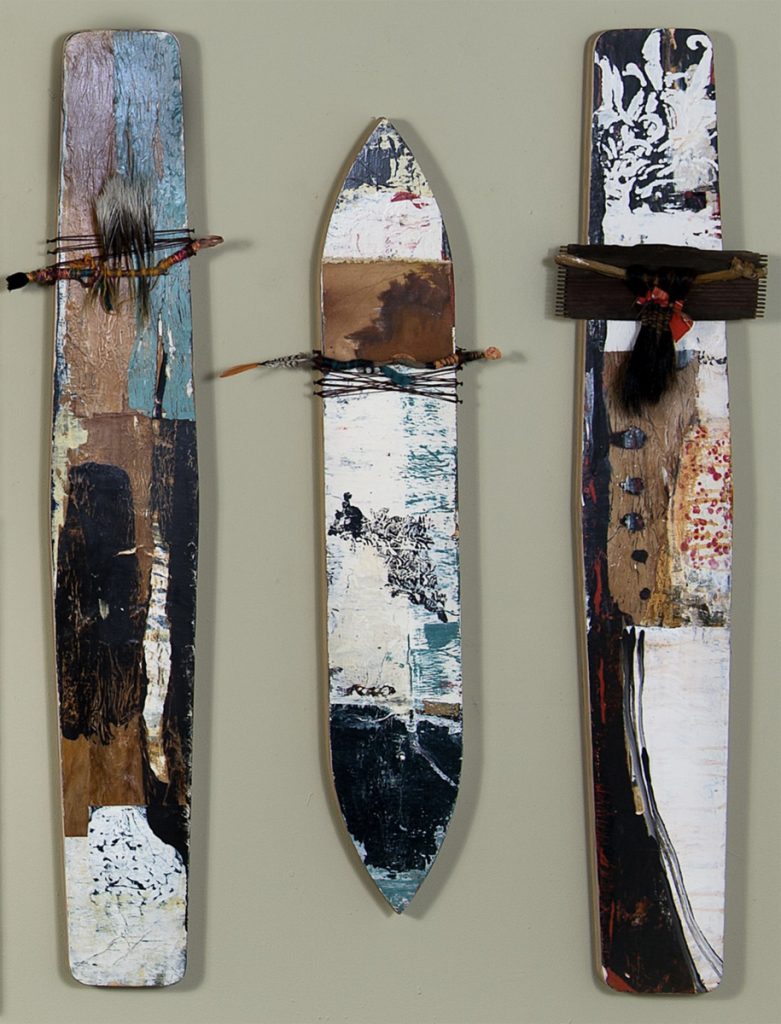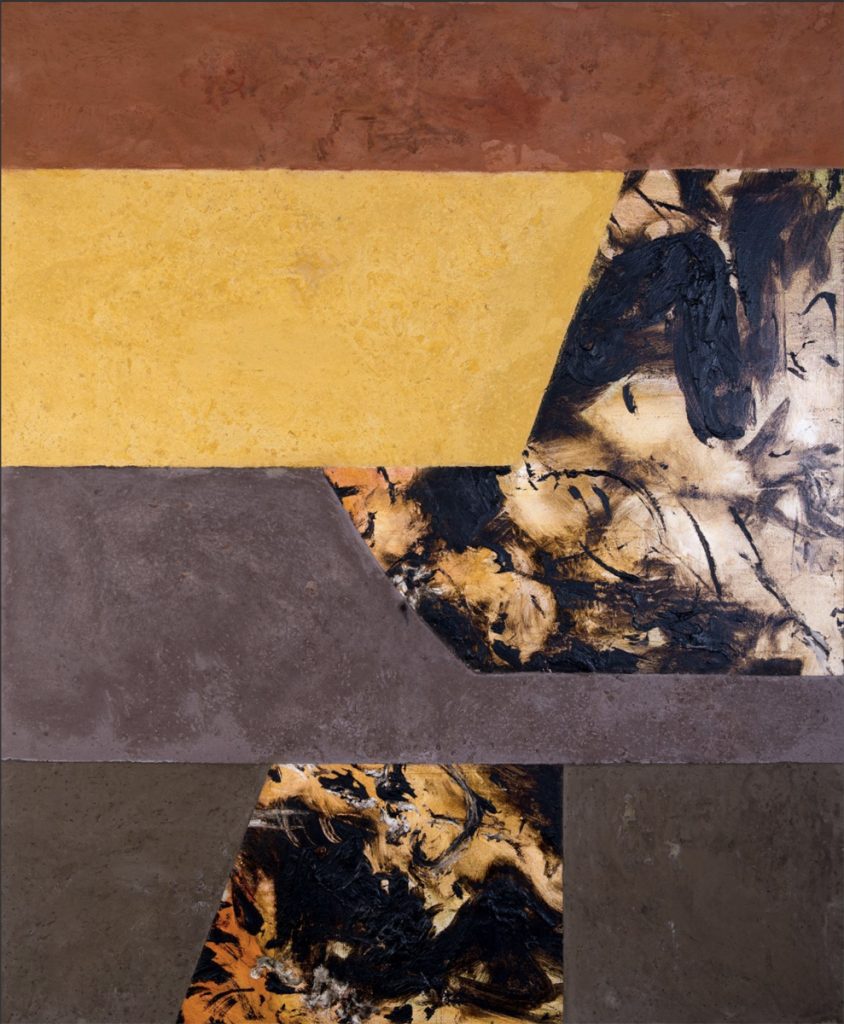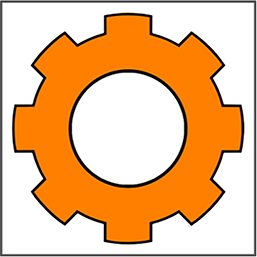- The Gearbox Gallery
- March 19 through April 24, 2021
- Fridays and Saturdays, noon to 5:00 pm

Artists Diane Williams and Chuck Potter are a married couple and share a very large studio space in Benicia where they have worked for over two decades. While they describe their work as not a collaboration, there is an obvious dialogue between them that informs their art. Both artists are concerned with place and time. Williams’ work is anchored by places that she describes as “energy spots.” Potter’s work has many references to times past, some perhaps ancient. Shown together as their work is in this exhibit, their art coalesces in a journey through place and time that is outside of time. It is spiritually uplifting and healing.
This interview was conducted virtually on February 18, 2020.
I reviewed your statement and you talk about the “zone.”
Diane: I know that when we’re there (in the zone) we’re not really thinking about what we’re doing, we’re making a mark or responding to a mark and it’s like we’re working with a force that is outside of us. It is a collaboration between us and that force, back and forth.
Chuck: We call the collaboration the “dance.”
You used the word “collaboration” but you mean as an individual with this outside force?
Chuck: Yes. Sometimes we invite an opinion from the other…
Diane: …but we don’t work on each other’s work. If one of us is struggling the other will ask, “Why do you think this isn’t working? Have you thought about this? About that?”
Diane, you tend to work rather large. Yes (Diane). And Chuck, you tend to work small, yes? When you look at the current work, I’m working in panels and diptychs and triptychs but if you look in our studio you will see large paintings as well (Chuck).
And you’re working in an unfamiliar medium to me.
Chuck: I have a lot of experience in construction work and so I am really fond of certain materials. I liked to make my stretcher bars for large canvases. Diane and I were painting very large at that time.
Diane: I was painting seven and a half by fifteen feet, triptychs. And he was painting six by seven foot panels. And just until recently we were building professional grade stretcher bars. Now we have someone send us the milled pieces and we construct them.
Chuck: We were both into learning old school methods (materials and techniques). We were using a lot of different materials, like tar, on our canvases. I wanted to prepare my surfaces but didn’t like the standard gesso. I used to mix in marble powder to get the surface I wanted. And one day I ran out of marble powder but there was some left over tile grout so I made my gesso with that. It took off. And I got into using other materials. Beautiful Japanese and Venetian plasters, for example. I began experimenting with it and mixing different materials to get different surfaces.
Diane: Yes, and one of the paintings in the show is a very old one with tar that Chuck did and has now reworked into it with plaster. Some of his surfaces are mirror-like or have the look of suede. The little pieces he did were experiments. I took a workshop a couple of months ago with Jen Tough and something she said interested me, “When you think you’re done, you’re not done. You may have a little piece that you think is interesting but if you have a hundred little pieces and put them into an installation, that could really be something.” So these little pieces became a real interest and we want to hang them in installation style.
I’m looking at this installation photo (top of post).
Let’s break it down a bit. (Diane’s work is in the upper row and also the three vertical pieces on the bottom right. Chuck’s work is in the horizontal row from the bottom left.)

Diane: I don’t think we will put all of this together in the show.

It may be too busy. You might want to break up the row of Chuck’s pieces with one of your (Diane’s) pieces.

Diane: Yes, that could be really cool.
Let’s talk about some of the pieces. Let’s talk about Chuck’s piece, Temple of Hope.

Chuck: This was an old tar and oil painting that I reworked with plaster. I wanted to do something larger and by blocking out some of the tar painting (under painting) it was like opening windows to something and it was interesting. I have different pigments to dye the plaster and this plaster has a wood pulp in it which also makes it lite (concern that the plaster on such a large canvas might be too heavy). We’re both interested in history. Old Egyptian and Keltic and Saxon ruins. In my construction work I was doing original plaster inspired by the interior spaces of Roman temples and the coloration may come from that. I was thinking of structure in this painting. Geometry is always interesting to me. I began playing with it and the tar shape at top right sort of resembles a house turned on its side.
Diane, your work in this show harkens back to some ancient time, especially with the found objects (porcupine hair, pheasant feathers, etc) that you have incorporated. What interests me is that when both your works are put together, they pull from different places to reach a commonality.
Diane: I think the inspiration for both of us is seated in ancient times.
In these shaped pieces I see references to so-called “primitive” art; oceanic art, indigenous native American art; there is a sort of totem quality to some of them. Perhaps you can talk about the intersection of your work.
Chuck: So she will do something and I really like it and tell her a story and then she likes something of mine and I tell her a story and it goes back and forth like that. Something clicks. We amuse each other in a way. And sometimes I’m a bit jealous because she will do something I wanted to do and do it so well that I can’t then do it (laughter).
Diane: The shaped panels are interesting because I liked that surf board shape eons ago. I was painting them ages ago. And now I get these shaped panels from these guys that make them so superbly. They create all the shapes for me. They made the wedges you see on the top (installation photo) and the longer ones that are like bullroarers (Aboriginal sounding device for communication).
Let’s talk about (Diane’s) piece, Temptation.

Diane: We stopped painting in tar and oil in 2000. We stopped because it was flammable and toxic. We switched to acrylic. And then we discovered the “old rust in vinegar thing.” If you soak steel wool in vinegar it will oxidize and you get rust and if you do it enough it will turn black. So a lot of what we did was to switch from tar to rust. For this piece I had newsprint and I put the vinegar and rust solution on it and I dried it in the oven and the paper got very brittle and interesting. Then I burnt holes in it. I put it down on this piece and I was thrilled with the wrinkles it formed. After it dried I sanded the wrinkles off to get these incredible lines. (She is describing the brown areas. The black areas are paint. The white snake-like shape is lifted wet paper to reveal what was underneath. The white shape at the bottom was created by putting a white stencil over the black surface, then covered with a yellow rice paper and sanded.) What I do, I cover the whole thing with several layers of polymer medium. It unifies the surface. Then I put varnish with a UVLS protectant and then I put cold wax over it and I buff it to a satiny sheen. After all of that, I make these little fetish objects and I don’t have to think about anything; I have all these materials and I start combining sticks with different things and dipping it in wax and…. And so I took one that worked with this piece and lashed it on with a cord around tacks put into the sides.
When you begin a piece like this, do you have something concrete in mind or is it totally intuitive?
Diane: It’s just a matter of using my eyes and seeing what is required. Sometimes they get so busy. Maybe it will work, maybe not. You don’t know. That’s how I work. They get noisy and then I try to quiet them down. I have absolutely no idea how it will look but I do have a feeling about something that I want to achieve. I wanted this one to look aged. All these pieces are about a sense of place. Yes, those long ones are Aboriginal. The wedge shaped pieces are influenced by my Jamaican travels year ago.
Is that true of your work as well Chuck? Is there a sense of place?
A sense of place in nature in general. My work tends to have more of a sense of time. I love the outdoors. One of the things I love is rock hunting.
Let’s look at Communion of the Elders.

Chuck: The top section is Venetian plaster and very smooth and a celadon color. The lower section is a coarser plaster. I plastered thin in the upper section because I wanted it to crack so I could get some of what was underneath revealed.
Yes, it harkens back to what you mentioned about Roman interiors.
Chuck: Yes, exactly. I’ve done a lot of fresco plastering. So I plastered thin and then pressed on the canvas to get the cracks. Then I rinsed it with water and the plaster heals itself. And I can do multiple thin, nearly transparent layers this way without losing the cracks. It has an antique look. The warmth of the red plaster is able to shine up through the celadon color. I inscribed four lines into the celadon area, put the canvas on a tilt, and with a squirt bottle I shot it with the rust, some outside of the lines but I also wanted it to go down the channels. There is also some black sumi ink and I would go back and forth with the rust and the ink until I got the desired effect. It was inspired by a valley of sheer rock walls and when it rains it is like a thousand waterfalls (Chuck and Diane own a rural home in Northern California.) There are Indian effects in the area and it was probably a sacred place.
I see the water reference in it but I also see ghost-like figures.
Chuck: The process that Diane and I use is one of burial and excavation and layering. It is a process of watching yourself almost as if you are outside of yourself. It is shamanic in a way; perhaps a vessel or a conduit for things to be revealed. (A discussion ensued about out-of-body experiences.)
Diane: I have out-of-body experiences all the time. I have MS and have a lot of body pain but when I’m doing my art there is no pain and I am not really in my body anymore. It’s incredible.
Chuck: This is why we came up with the concept of “outside of time.” It is like slipping through dimensions. What dimension is really real? Art is a natural high for me.
I think there are many realities and they are all real but we are out of touch with some, perhaps most of them, most of the time. But when we are in that “zone” that you mention, we have a chance to connect them.
Let’s go to The Sun Shown Through.

Diane: Again, it is a sense of place. We had taken a trip some months ago into the desert which was incredible, probably my first real encounter with the desert. I have spent a lot of my life following energy spots, finding places that were very energetic. For instance, I was in Jamaica at the height of reggae and it was so amazing. And the desert, on the border of California and Arizona, was one of those places. We hiked in some distance but then Chuck wanted to go farther to look for some petroglyphs. So I was alone there and the sense of that place informed this painting. I love the idea of weaving and weavers and women’s work and things that were once considered craft work that are now considered as art. So that red and black shape is a piece of fabric. There is also rice paper and rust, acrylic paint, and a lot of sanding. I wanted a sense of tension and like the way the black lines flow to create that. I think of the way nature branches, stretches and reaches, almost like a ballet dancer. I love the tension, the texture, the rust, the aged look.
Yes, it reminds me of something beyond time, almost geological.
It is landscape. Normally I do not do that and I questioned that when I was doing it but think it works. (A discussion of geological time referenced in cliff sides ensued.) So when Chuck abandoned me in the desert (laughter) it was sort of eerie and fantastic. So it put me face to face with something scary and something wonderful.
The theme of the show is “outside of time” and we have different time references in our art work but I think we’re working with a similar common denominator, a common place we are going to. It can challenge and push you beyond your comfort zone and that is something I really love about it. We’re often putting ourselves out on that “narrow ledge” to test ourselves.
These shaped pieces are new for you. So is that “going out on the ledge?”
Yes, I am going out on the ledge with those. (A discussion about the trap of many artists getting stuck painting for your audience and not then being able to explore new pathways ensued.)
Chuck: We both tend to work in series and in our studio you would see examples of our work going back years and you would see all the changes we’ve gone through. So you can see an old work and a new one and they sort of complete the spiral. Diane and I have heard the comment, “You only work on one painting your whole life.” You never do finish.
(Diane and Chuck were in China working on advanced degrees and Chuck related the following story, edited and paraphrased.)
Chuck: We walked into this park and there was a dojo (Japanese building or structure) and we went in and this man there had a collection of rocks in the shapes of animals on shelves, so there would be a row of rabbits, giraffes or whatever, all natural, not carved. He invited us into his studio and rolled out some rice paper and invited us to put something down on it with ink. And he did one and we traded ours for his. We had tea and then it was time to go. The door is opened for us and we stepped out and when we looked back it was all gone, the dojo and everything. And we both had this same experience at the same time. We were initially disturbed but then took some comfort that we had experienced it.
Diane: Yes, I did a painting that I called Ruby Pavilion. I often like to go back to the places I have been. And the dojo was another one of those energy places and experiences.
I always like to end these interviews with a question and that is, “Why do you do it?”
Diane: I will never say, “Because I have to.” I don’t have to do it. I am compelled to do it. I love to do it. I’m driven to do it. And I’m challenged to do it. It is a spiritual practice and it is putting myself on that cliff edge every day and testing my courage and ability; that’s why I do it.
Chuck: It’s like a form of prayer. It’s like an addictive puzzle. You want to keep searching. And even though you find and discover wonderful things, it makes you want to do the search even more. It’s not so much the end product, it is the whole process. It becomes this journey. It’s the biggest road trip ever. And the process of working with the hands is more addicting than being the observer. You’re no longer the spectator but actually in the game. That’s why I do it.
